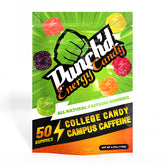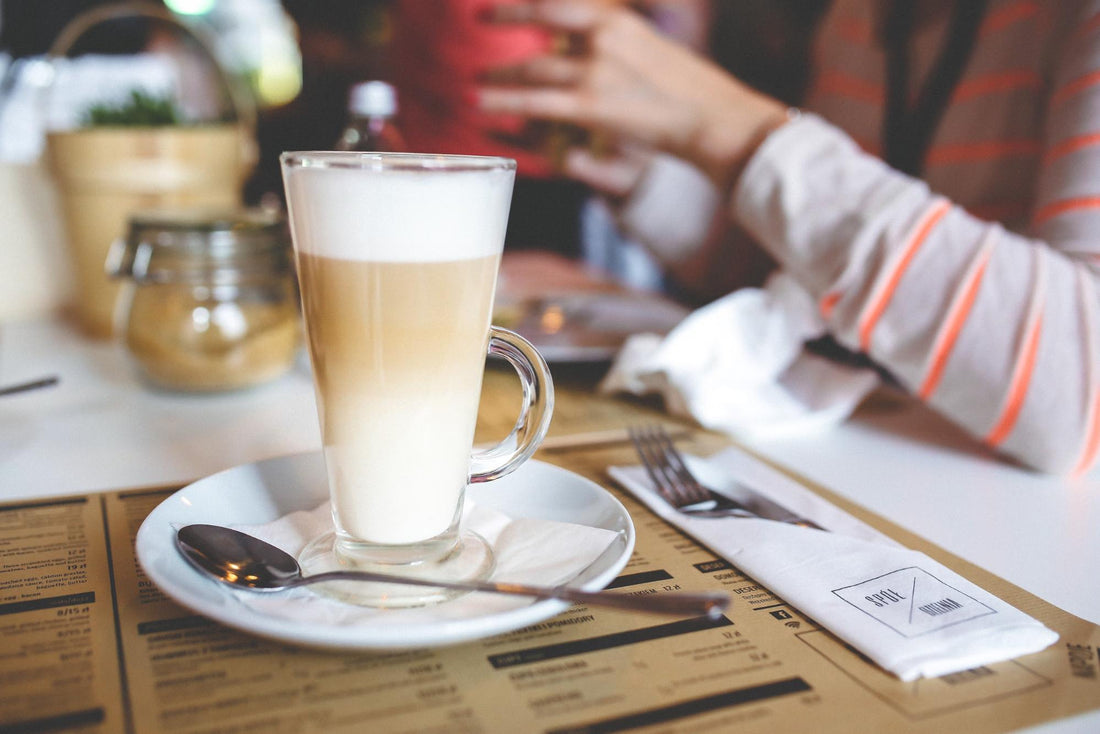Healthy Habits: How to Replace Your Morning Latte
Every day, in almost every country, millions of people around the world join in a shared experience: drinking coffee. People drink coffee for a variety of reasons, but most people consume it for the jolt of caffeine and alertness it provides.
The caffeine from coffee isn’t the problem — it’s the fact that most people drink it laden with cream, sugar and other additives. Learn how you can finally kick your latte habit and swap it for healthier habits.
The Problem with Your Daily Latte
While drinking a milky latte may satisfy your need for sugar and caffeine, it’s likely doing your body more harm than good.
For one, coffee contributes to a number of digestive issues, including acid reflux and gastroesophageal reflux disease (GERD). This could be because coffee weakens the reflex which keeps acid out of the esophagus, says Michael Joseph at Nutrition Advance. Coffee drinkers have higher rates of GERD and erosive esophagitis than people who don’t drink coffee.
While it’s not an acidic drink, coffee does cause an increase in the production of acid. It’s not the caffeine which causes these high acid levels. Rather, it’s the roasting process that makes coffee beans become more acidic, explains Karen Reed at Positive Health Wellness.
People who consume either regular and decaf coffee have been shown to have higher levels of gastric acid, which can further contribute to health issues mentioned above while also increasing the risk of stomach ulcers.
Lattes in particular can be bad for your health because they contain high amounts of milk and sugar. Adding milk and sugar not only increases the calories of the coffee; it may also increase calorie consumption throughout the day.
This was demonstrated in a study of 19,400 coffee and tea drinkers, recently published in Public Health. Two out of three coffee drinkers add sugar and milk to their morning drink. This leads to increased calorie intake: A packet of sugar has 11 calories and a tablespoon of whole milk has 9. Moreover, people who drank their coffee light and sweet consumed 69 more calories per day than black coffee drinkers.
There are a number of speculative reasons why latte and coffee drinkers consume more calories throughout the day than tea drinkers. One idea is that people who add sugar to their drinks are less concerned in general with eating healthy foods during subsequent meals. Moreover, people who consume sweet foods and drinks may experience the associated high and crash, which invokes unhealthy sugar cravings later on.
Milk and sugar each have their own negative side effects, too. Milk is high in sugar on its own, says Dacy Night at MyDomaine. It’s also high in saturated fat, unless nonfat milk is being used. Many people are also lactose intolerant, meaning that they cannot drink milk without experiencing some type of digestive upset. While they continue to use milk in their coffee and experience lactose intolerance symptoms, they may not link these issues back to their latte.
In short, people typically add milk and sugar to their coffee without considering how the habit might be impacting their overall health, says Ruopeng An, assistant professor of kinesiology and community health at the University of Illinois. “A lot of coffee and tea drinkers regularly use caloric add-ins to improve the flavor of their beverages, but possibly without fully realizing or taking into consideration its caloric and nutritional implications,” he explains.

Tips for Kicking Coffee and Sugar Cravings
Kicking coffee can be a challenge when you’re used to relying on it for daily energy. How much caffeine you drink daily plays a role in what kind of withdrawal symptoms you experience, and people have varying symptoms, says food writer Lindsey Goodwin.
“Around 50 percent of people experience caffeine withdrawal symptoms when they cut back on or eliminate caffeine. Experimental studies have shown that around 13 percent of individuals experience withdrawal symptoms severe enough to make them unable to work,” she adds.
Cutting back on your latte doesn’t mean you have to kick caffeine altogether. Rather, switching to more natural sources of caffeine can ensure that you’re getting the boost you need without loading up on the excess fat and sugar often found in lattes.
Similarly, choosing healthier foods that curb sugar cravings can keep you from giving in to unhealthy cravings. Most sugar cravings are caused by a need for dopamine, a chemical that’s elevated by sugar to induce feelings of happiness and elation, explains David Zinczenko, author of “Zero Sugar Diet.” He suggests opting for other foods that can release dopamine.
“In particular, the amino acid tyrosine (a building block of protein) has been shown to encourage the brain to release dopamine and another neurotransmitter, norepinephrine. The best sources of tyrosine: eggs, Spirulina, cheese, milk, and sesame seeds.”
Another idea is to opt for foods that are naturally sweet, but low in sugar, to reduce your cravings. Fruits that are low in sugar and carbohydrates include berries, which are also high in antioxidants, says health and food writer Laura Dolson. Lemons and limes are also low in sugar and all can be added water for flavor.
Dr. Robin Berzin agrees that fruit is a great option for curbing cravings, but not just because it's sweet. “Fruit...contains natural sugars accompanied by fiber, which slows digestion and enables the natural sugars to be more easily digestible by the body resulting in no major sugar spikes,” she explains.

Healthy Lifestyle Habits to Reduce Your Latte Cravings
Going for a run or brisk walk is a great way to both distance yourself from sweet foods inside the house and engage in a dopamine-boosting activity, writes nutrition researcher Kris Gunnars. Alternatively, engaging in short bursts of energetic workouts such as burpees, pushups, body weight squats or other body weight exercises can get your blood pumping and reduce cravings.
Another idea is to load up on water. Craving sugar can also be a sign that you’re dehydrated, says nutrition and health coach Joan Kent, author of “Stronger Than Sugar: 7 Simple Steps To Defeat Sugar Addiction, Lift Your Mood And Transform Your Health.” She explains how, from a biological perspective, it makes sense to seek food when we’re thirsty. Natural foods like vegetables and fruit are high in water, so our bodies might naturally gravitate towards them when we feel thirsty. Incorporating more water into your daily routine can prevent dehydration and keep sugar cravings at bay.
Lower Doses of Caffeine (Microdosing)
Understanding that caffeine isn't the problem, another option that's recently been studied and proven involves lower doses of caffeine, called microdoses.
Microdosing natural caffeine at regular intervals may provide the best way to stay focused and alert over longer periods of time. Scientific American states that regular mini doses of caffeine are more energizing than a morning mug. This is the "no jolt" feeling that Punch'd Energy was founded and developed around. Caffeine fatigue can be avoided with a microdosing strategy, eliminating the typical big swings of spikes and crashes.
Determining a personal caffeine regimen can be daunting at first. How much do you need? When do you take it? Findings show that the effects of sipping 1-2 ounces of black coffee every hour can provide the optimal way to increase focus and alertness. Similarly, chewing 2-3 caffeine gummies every hour provides the same physical & cognitive improvements in an easier and more convenient form factor.
Findings agree with studies, lower doses over time are the key to optimal performance and alertness, especially over longer days. Test the effects for yourself and see if you can change your caffeine routine for optimal benefit.
*Pure, natural green coffee bean caffeine in a real fruit gummy is the low cal, low carb, low glycemic energy treat that won't setback your diet. It may be just what you're looking for and that's the kind of healthy habit we can all get behind.
**Hint: Try coffee in the morning and caffeine gummies for the rest of the day. This will allow you to moderate and modulate your caffeine intake with your circadian rhythm.
Images by: Kaboom Pics, Rawpixel, Pixabay








